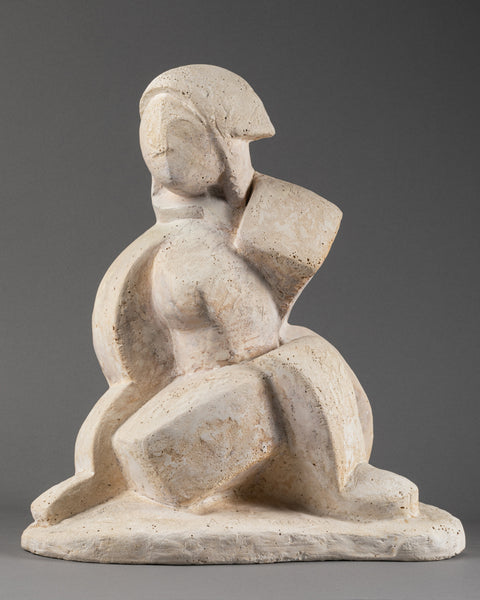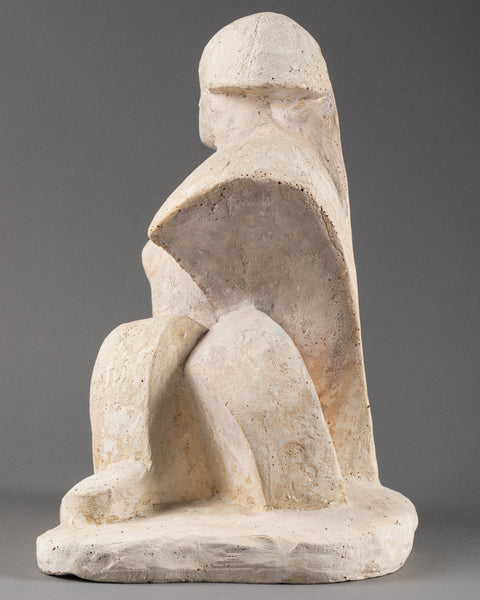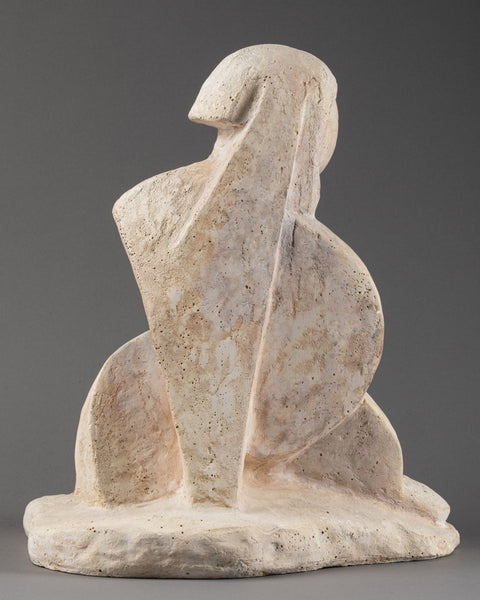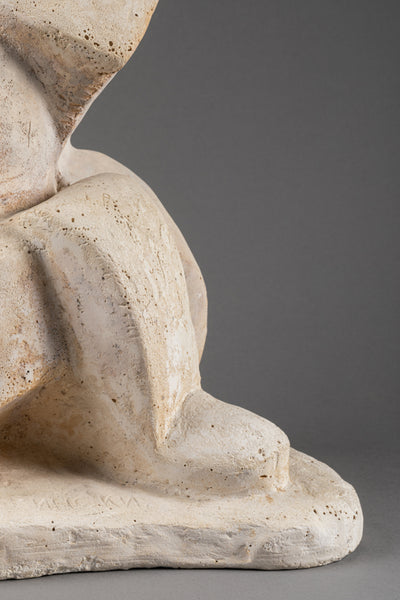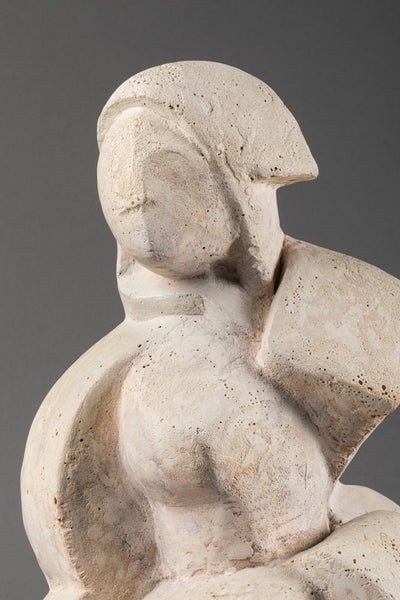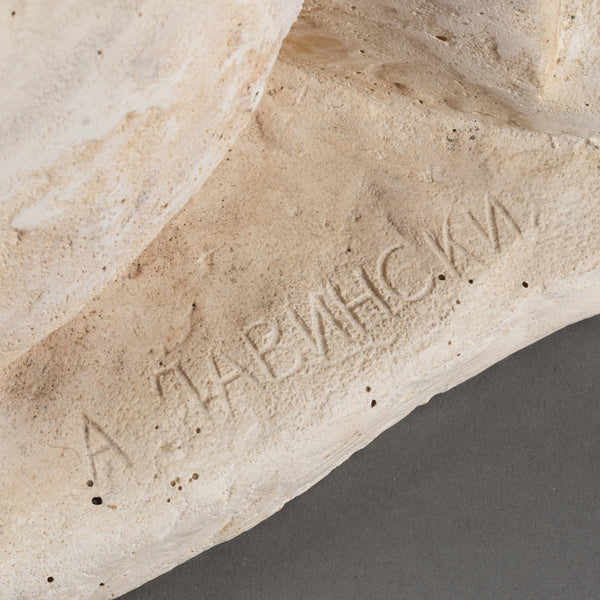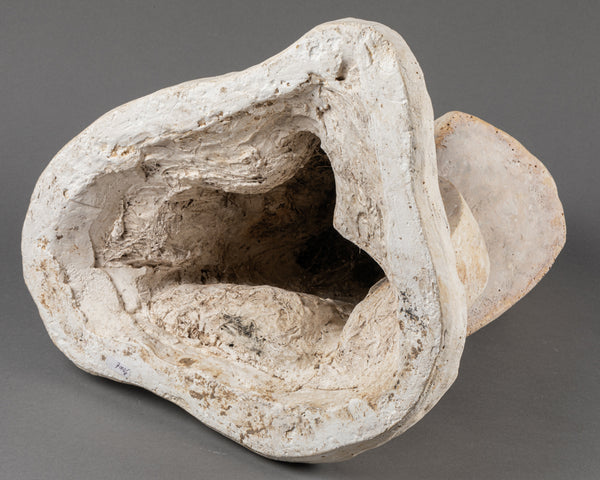Anton Mikhailovich LAVINSKY (1893-1968) Seated cubist figure - Plaster
"Cubist figure" - Plaster.
Signed "LAVINSKI". Single event
Russia, around 1925.
Dimensions: Height 27 cm / Length 33 cm / Depth 23 cm
Anton Mikhailovich LAVINSKY (1893-1968)
Sculptor, architect, designer and graphic designer.
Coming from a family of customs officers for the protection of the sea, he graduated from the architecture branch of the Baku Technical College (1913). In 1913 he moved to Saint Petersburg. As a student he attended Л classes. В. Шервуда in the Department of Sculpture of the Higher Art School of Painting, and of Sculpture and Architecture of the Imperial Academy of Arts. He completed his military service from 1915 to 1917. He studied at the Free State Art Studios, and at the Sochi-студию School of Sculpture (1918).
He takes part in the implementation of the monumental propaganda plan, under which the monument К. Марксу for the red village. In 1919 he created the project of the monument of the October revolution (co-author with В. А. Синайским). He was sent to Saratov in 1919 to teach in free art workshops. Member of the "society of artists of art nouveau".
In 1920 he moved to Moscow where he worked for "Windows of satire GROWTH". He became one of the first masters of poster mosaic. He produced numerous movie posters, advertisements, book covers. He is notably the author of the very famous poster of the film "The Battleship Potemkin".
After the Revolution of 1917, a new artistic era was declared in Russia: "constructivism", an aesthetic using industrial techniques and the geometrization of space. Many "futuristic" artists are rushing into the breach; the fine arts education system is in turmoil. Anton Lavinsky will be one of the first reformers.
Lavinsky was undoubtedly ill-suited at the time: an idealist, he abandoned sculpture, began working with wood, made theatrical sets and posters, then returned to architecture, his original profession. . But as soon as a handful of students refuse to study with this "stool maker", he loses all interest in the discipline and creates little more than newsstands, stands for parades ...
However, his sculptures reveal an authentic, private, assertive character. Carried out in an intimate setting, Lavinsky's sculptures depict women and couples: the only preserved domain in a world of the 1920s that was already very Orwellian. It won't stay that way for long: the new ideal of the free couple, promoted in the Soviet Union, is taken to a climax in the story between Lavinsky and Mayakovsky, with whom he works as an illustrator and decorator. Mayakovsky was living at the time with Ossip and Lilia Brik: the latter could not have children, it was Lavinsky's wife who would have given birth to Mayakovsky's son… Enough to push Lavinsky to destroy, a few years later, sculptures become incongruous?
After a trip to Cologne in 1928 to direct, with El Lissitsky, the realization of the Soviet pavilion for a major press exhibition, Lavinsky never left the USSR again. He survived the end of Cubism, futuristic magazines and workshops, then the suicide of Mayakovsky in 1930. Living on state commissions, he remained in Moscow until his death in 1968. All his archives have been discarded and are unfortunately lost.
His work is however represented in several public collections, such as that of the National Library of Russia.










